Bernado O’Higgins
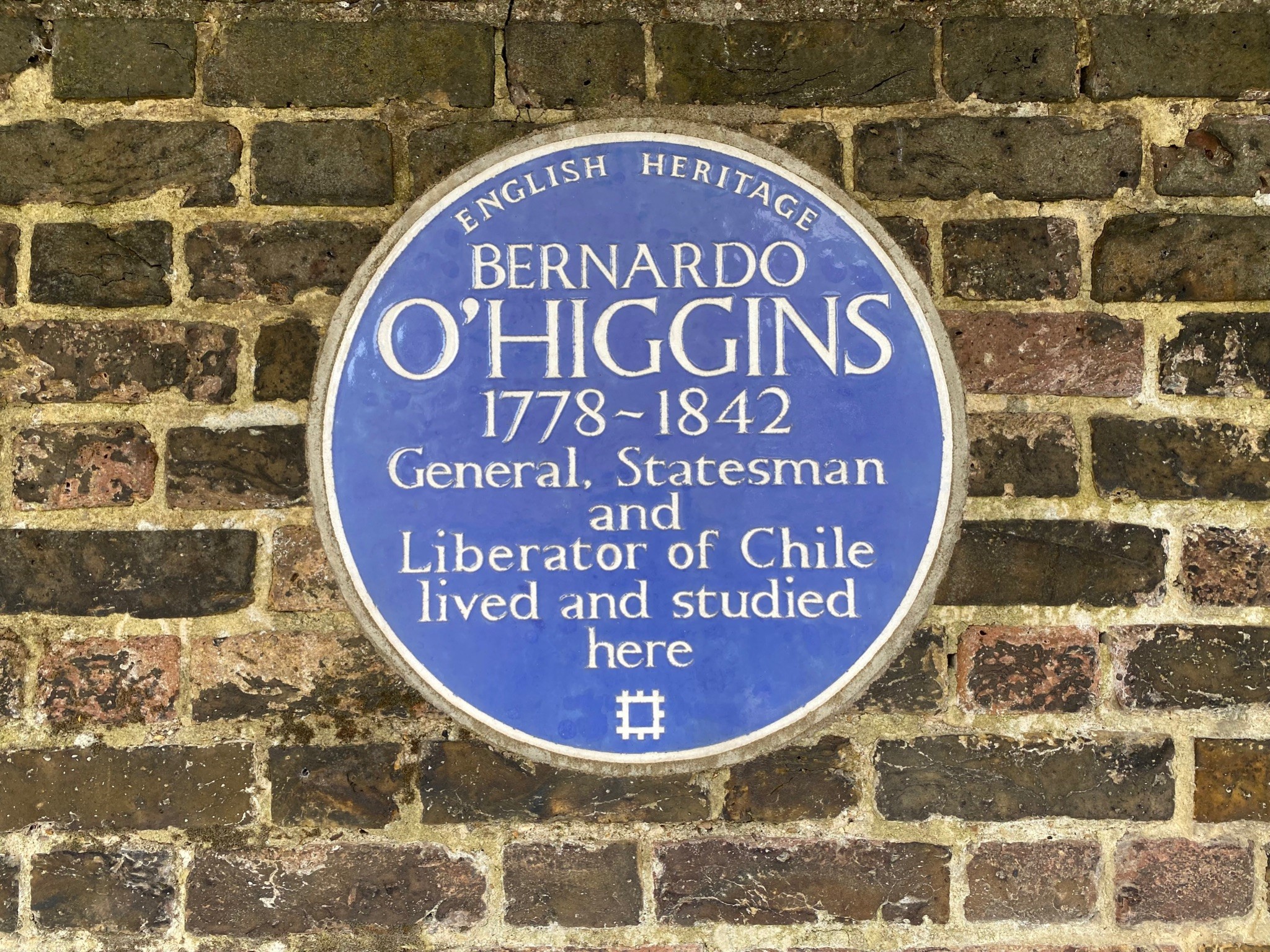
“The deep roots of his ideas of freedom are in Richmond Upon Thames.”
Habitats & heritage intern Jack Crola has been investigating the history of a a Chilean liberator who lived for many years in Richmond. Read what Jack found out below.
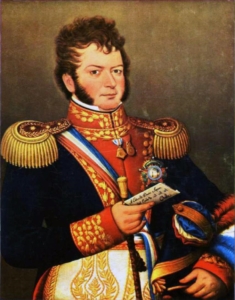
Bernado O’Higgins was born on 20th August 1778 in Chillan to an Irish noble family, being the illegitimate son of Spanish officer, Ambrosio O’Higgins, Marquis of Osorno. The O’Higgins family had migrated to Chile during the mid-17th century, following the confiscation of all of their Irish estates by Oliver Cromwell, due to their refusal to submit to Parliamentarians. During his early years, O’Higgins stayed with his mothers family in Chile, retaining a distant relationship with his father, with the two never meeting in person. Despite this, his father continued to fund his son’s education in Lima, Peru.
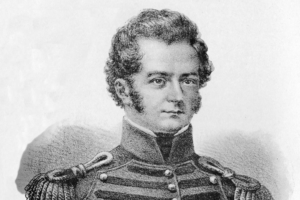
When O’Higgins came to Britain as a teenager, Chile had been under Imperial Spanish rule since 1540, and had seen much of its aboriginal population decimated, and had experienced authoritarian leadership under the Spanish government. For this reason, he would come over to England to experience greater political freedom and autonomy. Later in life, he would say of Richmond as being one of the key drivers to his desire for freedom, liberty, and justice.
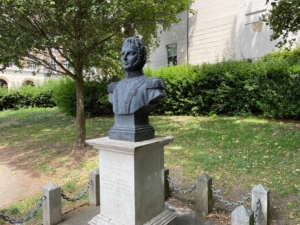
The bust of O’Higgins pictured here, was unveiled in the autumn of 1998 at the Terrace Gardens, and in attendance included Chilean ambassador, Mario Artasa, and naval rear admiral Felipe Howard, along with Richmond’s Mayor, Mary Weber. The bust served to honor his love for Richmond, as well as ideas of freedom from oppression, free international trade, and religious toleration.
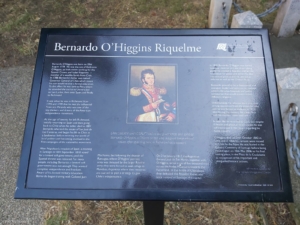
Every year on the 20th of August, his birthday is celebrated by Chilean diplomats, who come to visit his bust to pay their respects. Here is such a particular event that is pictured with the mayor of Richmond, Suzette Nicholson.
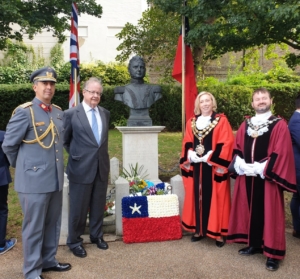
Today would be an overcast and somewhat windy day for photography, but as I was using my phone for said task, it wasn’t an overall dealbreaker. I captured a few photographs of O’Higgins bust before heading to Clarence House, where I encountered the blue plaque that was engraved onto the side wall back in 1994. In attendance that day was Chilean ambassador, Hernan Errazuriz, Richmond’s Mayor, Anthony Manners.
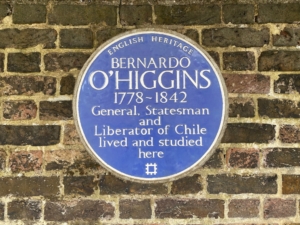
Clarence House is particularly notable for being his place of residence as a student from 1795-99. The property was originally built for Nathaniel Rawlin’s, a London haberdasher merchant in 1696. From 1792-99, the house was a Catholic school run by Timothy Eeles, where O’Higgins would study here during his formative years, learning history and the arts. The blue plaque was installed by English Heritage for his efforts in the Chilean War of Independence.

At the same time that he was studying at the school, his political ideologies were heavily shaped by both the ongoing civil war in France, as well as by one of his own teachers. The teacher, believed to be Francisco de Miranda, was a revolutionary that instilled ideas of freedom and liberty into the young boy, which he would carry back to Chile when he returned there in 1800. He would later manage to use this inspiration to launch an attack on Spanish rule in 1810 with the Criollos to defeat the Royalists. By 1817, he had become the Supreme Leader of Chile, however, due to a controversial tax law, he was removed from power after only 5 years in 1822. He died in Lima, Peru on 24 October 1842, aged 64.
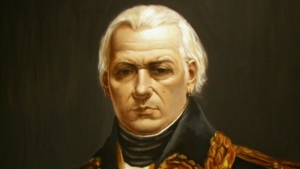
On the whole, Richmond has retained a strong connection with Chile’s liberator, and has remained a place that has often promoted democratic values of inclusivity, liberty, and political freedom. Without Richmond, O’Higgins may have never developed the core ideologies that he used to such effectiveness in order to liberate Chile from Spanish rule. For those reasons, Richmond is honored for his democratic contributions to be honored within the community for generations to see, serving as a symbol of Richmond’s core values of inclusivity and democracy.
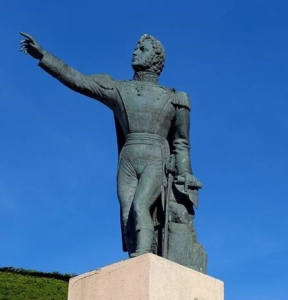
Today, the legacy of Bernado O’Higgins is one of acclaim as being a liberator of his own people from the shackles of imperial domination and oppression. He is remembered and commemorated in Chile as a founding father of the nation, as well as a pioneer of democracy and national autonomy within Latin America as a whole. His overall legacy as a hero does not just extend to Chile, but around the world, and we can all be proud of how Richmond contributed to global history and democracy being made.
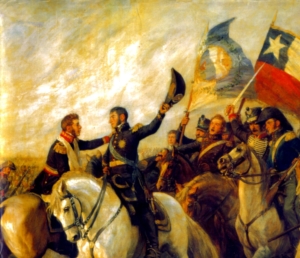
Record details:
- Title: 2, The Vineyard, Richmond
- Date of Work: 1999
- Reference number: LCF/12990
- Level of description: Item from Collection–Photographs (LCF)
- Part of: Collection–Photographs (LCF)
- Access restrictions: Unrestricted
- Use restrictions: Copyright applies LBRUT
- Topics: Photograph
- Contributors: Nancy Noel 3 Cleveland Court, Spring Grove Road (Photographer)
- Language: English
- Record Number: 12212
- Bookmark Link:
https://richmond.spydus.co.uk/cgi-bin/spydus.exe/ENQ/WPAC/ARCENQ?SETLVL=&RNI=12212